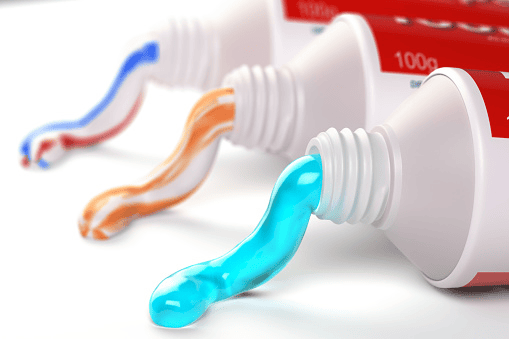Without toothpaste, your self-care products would be incomplete. How or why did you choose that particular toothpaste, and why do you continue to do so? Why are there so many different types of toothpaste in the first place?
It's because you're unique, and your oral hygiene requirements are unique, necessitating toothpaste that is tailored for you.
Around 3000-5000 BC, ancient Egyptians developed a dental cream including powdered ashes from oxen hooves, myrrh, eggshells, and pumice, chiefly to remove debris from teeth. Since then, formulations have changed significantly, ranging from ox hoof ashes to herbs, tooth powders, and different types of toothpaste.
Colgate & Co. first mass-produced toothpaste in a jar in 1873. Dr. Washington Sheffield of Connecticut was the first to put toothpaste in a collapsible tube, which he did in 1892. Since then, toothpaste has arrived in a variety of forms and formulas.
When you brush your teeth, toothpaste slurry will be formed with saliva which will aid in the dispersion of the active ingredients of toothpaste and lower their concentration. Saliva will also change the pH of the slurry, increase its temperature and allow saliva components to react with toothpaste excipients.

What fluorides can do:
A pea-sized amount of fluoride toothpaste is advised for children aged above 3. And for children aged six and above, individuals with a high risk of caries, and for adolescents having orthodontic treatment, toothpaste with high fluoride content is prescribed.
Triclosan, stannous chloride, stannous fluoride, zinc citrate and zinc chloride are the most commonly used and scientifically supported antiplaque or anticalculus ingredients in toothpaste. Triclosan has been reported to have a direct anti-inflammatory effect on the gums and Zinc salts act as an antimalodor agent. More recently, o-cymen-5-ol, an antimicrobial and anti-inflammatory agent, has been introduced either alone or in combination with Zinc salts.
Tartar cannot be easily brushed away like plaque, leading to destructive gum disease. Sodium or potassium salts of the pyrophosphate, tripolyphosphate or hexametaphosphate ion are the anti-tartar agents that are high in pH to prevent hydrolysis of the condensed phosphate and exhibit higher flavour to mask the taste of the same.
Teeth sensitivity alleviation can be achieved in different ways- through nerve desensitization which can be accomplished by potassium citrate or potassium nitrate, and through occlusion of dentinal tubules which can be accomplished by stannous fluoride, strontium acetate, strontium chloride and more recently calcium sodium phosphosilicate.
Blue covarine, an optical brightener, adheres to the tooth surface, changing the optical properties of the teeth and perceptibly whitening teeth.
The most common abrasives are hydrated silica and calcium carbonate. Other abrasives are hydrated silica, calcium carbonate, dicalcium phosphate dihydrate, calcium pyrophosphate, sodium metaphosphate, alumina, perlite, nano-hydroxyapatite and sodium bicarbonate. The abrasives' action on teeth is determined by the concentration, the load applied during brushing, toothbrush filament diameter and shape and how are it dragged across the teeth, and abrasives' shape, size and hardness.
Humectants, such as glycerin and sorbitol are used to prevent toothpaste from drying out, and to provide a smooth and glossy appearance. Surfactants aid in the dispersion of toothpaste and all its ingredients in the mouth while brushing with the foaming action.
To improve the taste, artificial sweeteners like sodium saccharin or albeit are included by the majority of the manufacturers. Preservatives, such as sodium benzoate, ethyl and methylparaben are added to prevent bacterial growth due to long term storage.
Flavours are primarily added for cosmetic reasons and mask other ingredients' unpleasant taste. For colouring, artificial colourants are added and the whiteness of the toothpaste is achieved by adding titanium dioxide.
To conclude, when buying toothpaste, make sure it is ADA approved.
As per unique dental needs, you can choose your toothpaste. If you can't, your dentist is always happy to help.
Now that you know all about toothpaste, happy shopping for toothpaste!
















CONTACT US